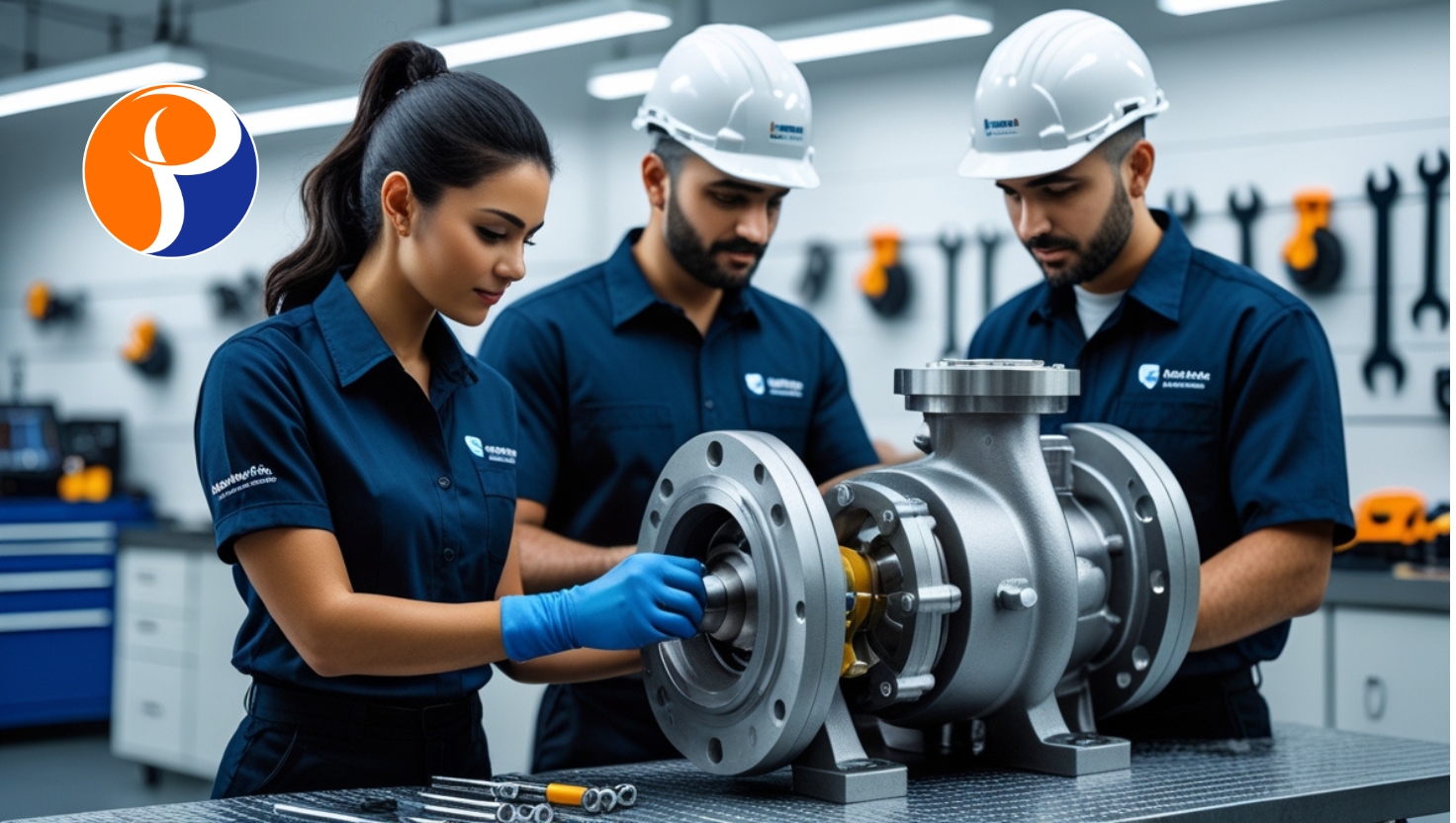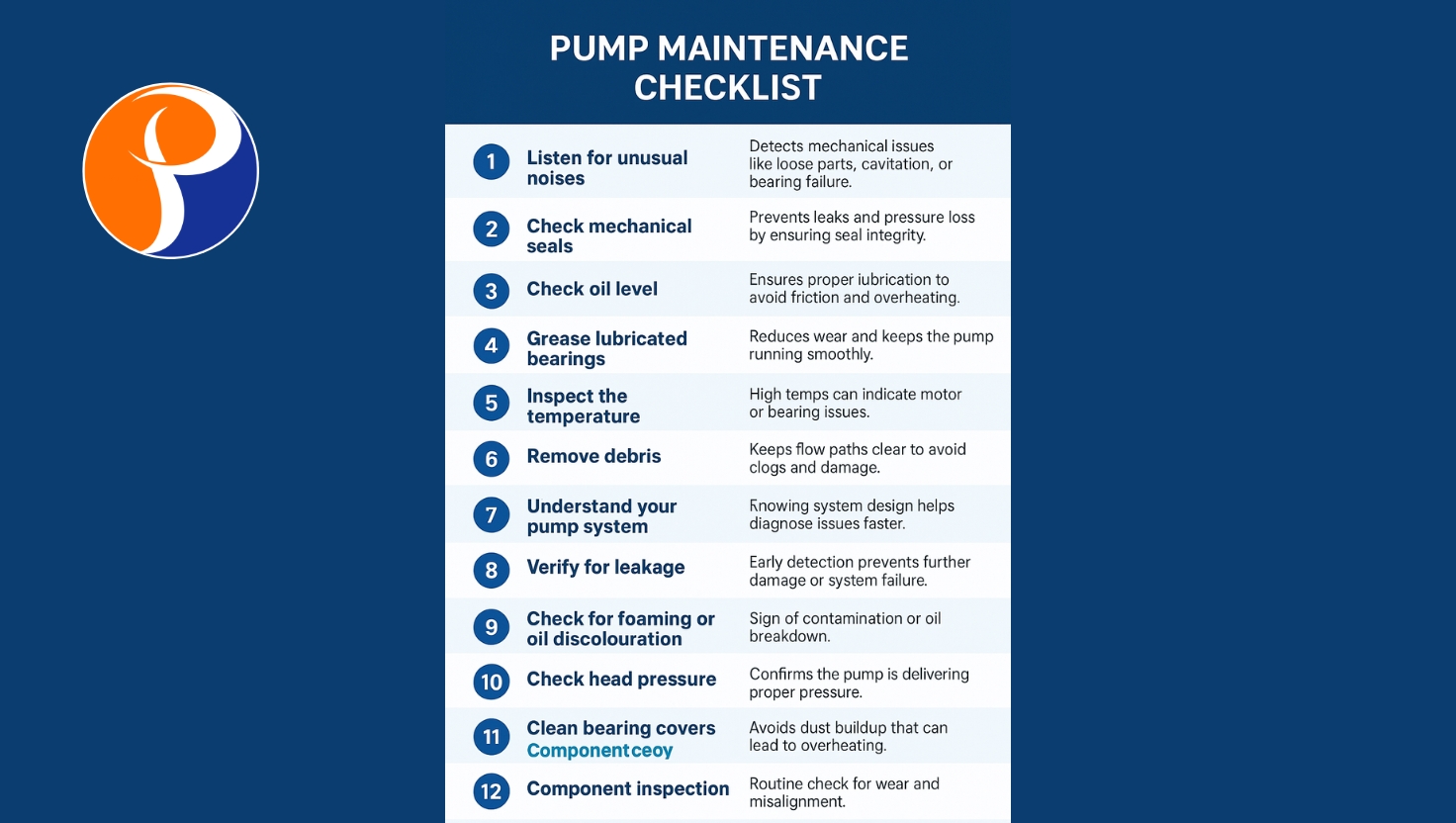
Pump Maintenance in 10 Easy Steps
Let’s be honest, when was the last time you gave your water pump a second thought? For most of us, it’s one of those “out of sight, out of mind” pieces of equipment. We only remember it exists when it starts making a noise like a dying robot or stops working entirely. A little bit of regular care can save you from a world of damp, expensive frustration. Please consider this guide a check-up for your hardworking pump, ensuring it lives a long and healthy life. Whether you’re a homeowner or a facility manager, understanding the basics of pump maintenance is crucial. This article will walk you through water pump maintenance in 10 easy steps, a simple routine that can prevent most major issues. We’ll also touch on the different Types of pump maintenance so you know what you’re doing and why. So, grab your tools, and let’s show your pump some love!
Step 1: The Pre-Work Safety Dance (A Non-Negotiable)
Before you even think about touching your pump, you must perform the safety dance—and no, we don’t mean the 80s dance move. This is the most critical step in any pump’s service routine. Always, and we mean always, disconnect the pump from its power source. That means unplugging or switching off the circuit breaker for electrical pumps. For engine-driven pumps, ensure the engine is off and the pump is down. You are about to work with water and electricity, a combination that is only fun at a water park.
Next, make sure the system pressure is fully released. Open a nearby tap or valve to ensure no water is trapped under pressure inside the pump. Trust me, getting blasted in the face with a jet of stale water is not the refreshing experience you’re looking for. A simple step can prevent injuries and make your entire water pump maintenance task much smoother and safer.
Step 2: Become a Visual Detective
Now that safety is sorted, put on your detective hat. Your first clue to your pump’s health is its appearance. Give the entire unit a thorough visual inspection. Look for any obvious signs of trouble, like cracks in the casing, dents, or signs of corrosion. Pay special attention to where the pipes connect to the pump; that’s a common spot for leaks to develop.
Also, keep an eye out for any oil or coolant leaks. Many pumps have lubricated parts, and seeing a puddle of oil underneath is a sure sign that something is amiss. This visual check is fundamental to preventive pump maintenance and can help you spot minor issues before they become a full-blown “I need pump repair near me right now!” emergency.
Step 3: The Strainer Strain
The intake strainer is your pump’s first line of defense. Its job is to stop debris like leaves, sand, and small, curious frogs from getting inside and causing havoc. Over time, this strainer can get clogged, forcing your pump to work much harder than it needs to. A pump working too hard is an inefficient and soon-to-be-broken pump.
Locate the strainer, usually at the pump’s inlet, and clean it thoroughly. A soft brush and some running water are usually all you need. Make sure it’s completely free of gunk before putting it back. A clean strainer is a simple fix that dramatically improves efficiency and is a cornerstone of good water pump maintenance.

Step 4: Listen to the Heartbeat
A healthy pump has a specific sound—a steady, rhythmic hum. An unhealthy pump, however, sounds like a bag of spanners being shaken violently. Once you restart the pump (after reconnecting power, of course), take a moment just to listen. Any grinding, screeching, or rattling noises are clear cries for help.
These sounds often point to problems with the bearings or a misaligned impeller. Ignoring strange noises is the fastest way to turn a simple pump maintenance task into a costly repair. It might be time to call a professional if you hear anything unusual. A quick search for “pump maintenance near me” can connect you with experts who can diagnose the issue.
Step 5: Feel the Vibe
While you’re listening, it’s time to feel the vibe—and we don’t mean the emotional kind. Place your hand on the pump housing (be careful, it might be hot!). Excessive vibration is a telltale sign of trouble. A slight hum is usual, but if it feels like your pump is trying to walk away, you have a problem.
This often relates to alignment issues or worn-out components. Consistent vibration will shake other parts loose and cause premature wear and tear. Catching this early is a key part of predictive pump maintenance, saving you from more significant damage down the line.
Step 6: Check Those Seals and Gaskets
Seals and gaskets are your pump’s unsung heroes, creating watertight seals to prevent leaks. Scrutinize them for any signs of wear, cracking, or brittleness. Even a tiny, seemingly insignificant leak can waste a surprising amount of water and lead to corrosion or motor damage over time.
If you find a faulty seal, replacing it is usually inexpensive and straightforward. Keeping these small parts in good condition is a hallmark of innovative pump services and prevents the kind of leaks that lead people to frantically search for “pump repair near me” on a weekend.
Step 7: The Lubrication Celebration
Like a squeaky door hinge, your pump’s moving parts need lubrication to operate smoothly. Consult your pump’s manual to find the specific lubrication points and the type of lubricant recommended. Over-lubricating can be as bad as under-lubricating, so follow the instructions carefully.
Applying the right amount of grease or oil at the recommended intervals reduces friction, minimizes wear, and keeps everything running cool and efficient. This simple act is one of the easiest ways to extend your pump’s lifespan as part of your regular water pump maintenance schedule.
Step 8: Electrical Check-Up
This step requires extra caution. If you’re uncomfortable with electrical components, it’s best to leave this to a professional. For those who are, check the electrical connections to ensure they are tight and corrosion-free. Look at the power cord for any signs of fraying or damage.
Also, if you have the tools, watch the pump’s amperage draw. An unusually high or low reading can indicate an underlying issue with the motor. Proper electrical pump maintenance ensures performance and safety for your entire system.
Step 9: Performance Review
Is your pump actually doing its job correctly? This is its performance review. Monitor the water pressure and flow rate. Is the pressure weaker than usual? Is it taking longer to fill a tank? A drop in performance can indicate a worn impeller, a clog somewhere in the system, or a failing motor.
Keeping a simple log of pressure readings can help you track its performance over time. This data is invaluable for spotting trends and predicting when a part might fail, moving you from reactive to proactive pump maintenance.
Step 10: Keep a Logbook!
This might sound boring, but it’s a game-changer. Keep a simple logbook for your pump. Write down the date of each inspection, what you did, any parts you replaced, and any unusual observations. This log becomes the pump’s medical history.
When a problem does arise, this history will be invaluable for you or a technician to diagnose the issue quickly. It’s the final, and perhaps most intelligent, step in mastering Water pump maintenance in 10 easy steps.

Need a Professional Hand?
While these 10 steps will cover most basic pump maintenance needs, some jobs are too big, too complex, or too scary for a DIY approach. There’s no shame in calling in the cavalry! If you’ve gone through these steps and your pump is still unhappy, or if you’d simply prefer a professional touch, the team at pumpsservices.com is here to help. We offer comprehensive pump services for all makes and models. Don’t struggle alone—call us at +966597747661 or email info@pumpsservices.com for expert advice and service.
